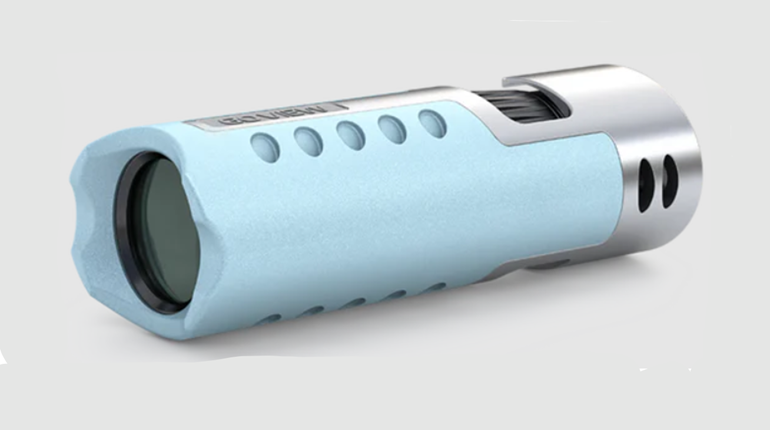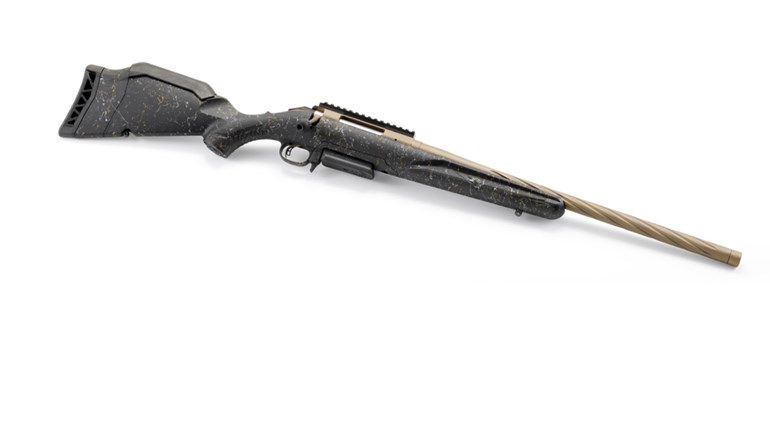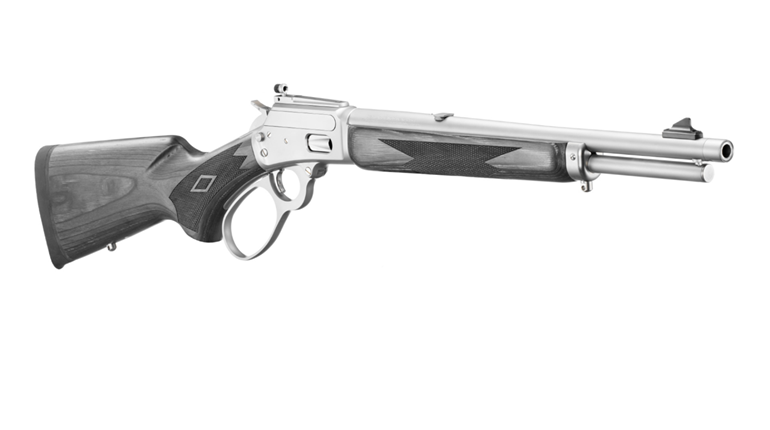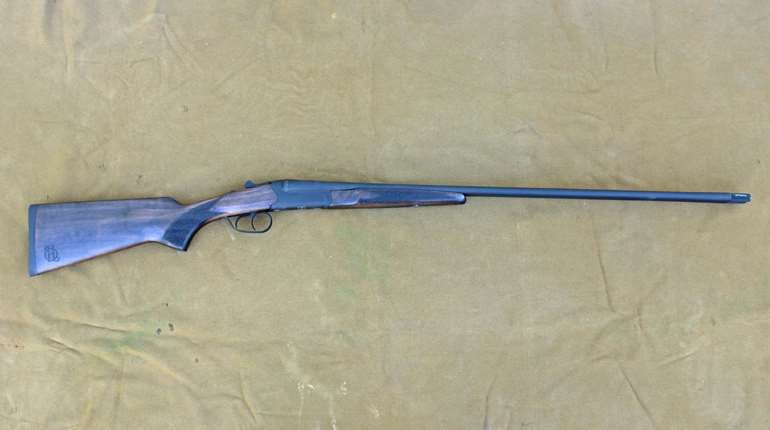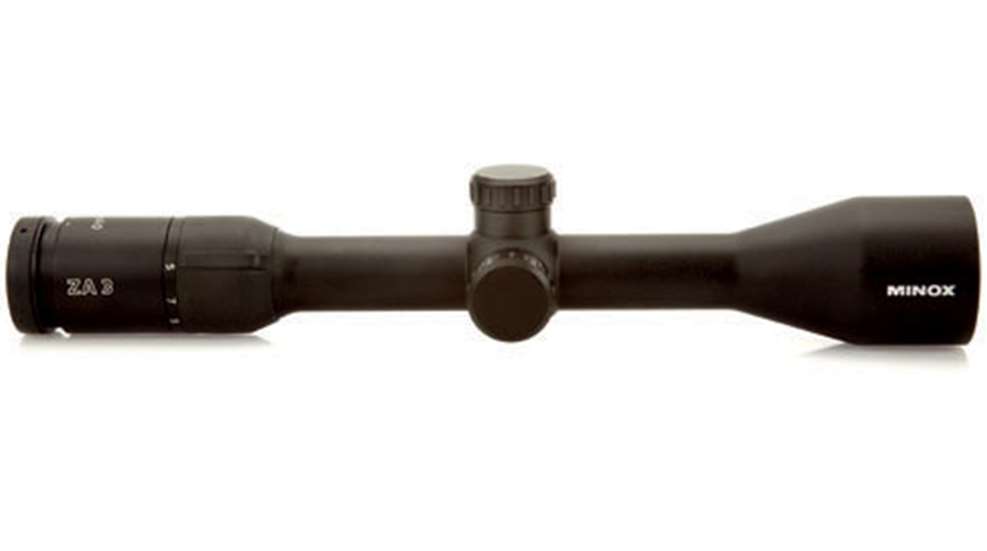
Half a century ago it was common to buy optics made entirely under one roof, but that’s rare in these days of specialization. Grinding lenses is very different than multi-coating lenses, and both are very different than making scope tubes or binocular bodies. So a common manufacturing strategy is to engineer optics in-house, then have the parts made to the company’s specifications in various factories. The parts are then shipped to an assembly plant, its location often depending not just on the price of labor but import duties and shipping costs.
Recently Minox introduced its ZA series of riflescopes, and like many modern firms Minox is a little coy about exactly where everything is made. The ZA3 3x-9x-40mm test scope didn’t have any of the traditional markings saying, “Made in Wherever,” nor did its box. Minox USA does plainly state that the scopes “are designed in Germany and assembled in the USA,” and that Minox uses “high-tech glass from SCHOTT, the legendary German glass pioneer.” It doesn’t, however, mention that SCHOTT has glass factories all over the world. There’s been one in Pennsylvania since 1969, and recently SCHOTT also built a factory in China.
In reality it doesn’t matter where all the parts were made—well, except to a few shooters who still firmly believe in the “single factory” theory. What really matters is the scope’s quality, and its price.
My tests were started by mounting the ZA3 on a custom .338 Winchester Magnum rifle that’s acquired the nickname “Mr. Miserable,” due to breaking so many new test-scopes over the years. While mounting the scope I centered the reticle and, with a collimator, made sure the reticle pointed in the same direction as the bore. If this isn’t done, then some of the other tests often show “false faults.” With the 13.6-ounce scope, the rifle weighed 7 pounds, 12 ounces.
Reticle shift was checked by looking through the scope at the collimator screen, then turning the magnification ring from 9x down to 3x and back up again, several times. In this particular scope the reticle remained centered from 9x down to 5x, but below that the reticle shifted about an inch high and left. In the real world this happens more than most shooters realize, and doesn’t mean too much, provided you sight in at high power and use high power to shoot at long range, which hunters generally do.
A flashlight test was used to check eye relief, advertised at more than 4 inches throughout the magnification range. In the test scope it measured 4 inches at 3x and 3.7 inches at 9x.
While sighting-in the .338, the clicks appeared to move point of impact exactly the quarter inch advertised, but sometimes the adjustments wouldn’t move correctly until after the next shot was fired. This was fixed by turning the knob two clicks past the correct point, and then two clicks back—a good technique for adjusting almost any scope.
After zeroing I shot 50 rounds of the rifle’s most accurate load over two range sessions. Scopes can go bonkers (a technical optics term!) due to recoil in several ways, but perhaps the most common is a simple enlargement of groups, so it’s necessary to use accurate ammunition, plus keep the shooter fresh and vigorous. Over the decades I’ve found that if a new scope survives 50 rounds on a relatively hard-recoiling rifle like Mr. Miserable, the scope will usually last for quite a while. The Minox maintained its zero and groups remained small throughout the test.
Afterward I took the scope off the .338 and froze it overnight at zero degrees, then immersed it in a sink full of 100-degree water with the turret caps off. If there are any leaks in a scope, the warmed gas inside (in this instance argon) will expand enough to push a steady string of bubbles out of any leak. The scope never bubbled, even when I twirled the adjustment turrets and magnification ring.
Next I mounted the scope on an accurate Remington 700 in 7mm SAUM, sighting in with 140-grain Core-Lokt Ultra factory ammunition. This ammo normally groups into less than an inch at 100 yards, so the setup would work well for shooting the square, which the scope accomplished with precision, as it should.
For testing optical sharpness and brightness I use a chart with 10 alternating black and white lines, starting 1 inch wide at the top of the chart, then shrinking in width to 1⁄16-inch. The test is done on moonless nights, with the chart illuminated by a 100-watt light bulb 25 yards away. All scopes are set on 6x to level the playing field, and rated by the smallest line visible. If the line can be seen very sharply, then the number is given a +.
So far all scopes tested have rated between 5 and 8. The fives were old scopes with uncoated lenses, and the eights have all been scopes costing well over $1,000. New scopes retailing for between $200 and $800 test between 6 and 7. The 3x-9x-40mm Minox tested a solid 7+, just an eyelash from the brightest scopes made, and its real-world price is right around $400. In fact, its dollars-to-brightness ratio is the best of any scope I’ve ever tested!
Technical Specifications
Type: variable-power riflescope
Magnification: 3x-9x
Objective Lens Diameter: 40mm
Eye Relief: 4" (advertised); 4" @ 3x, 3.7" @ 9x (tested)
Field of View at 100 yds: 10.5" @ 9x; 31.5x @ 3x
Reticle: plex, German No. 4, BDC
Coatings: fully multi-coated
Dimensions: length 12"; weight 12.3 ozs.
MSRP: $479; $499 w/BDC reticle













